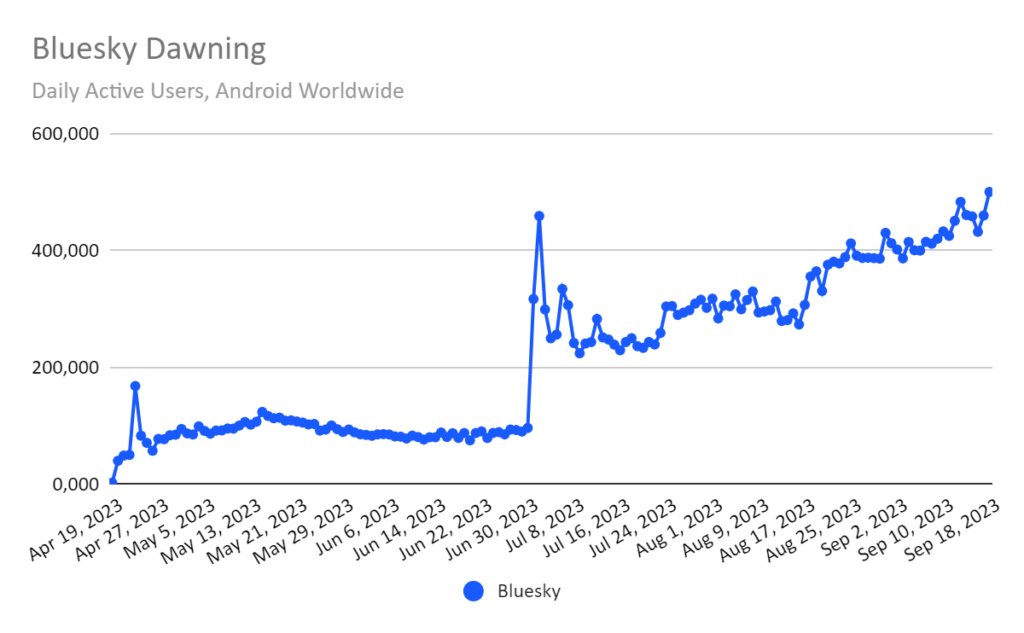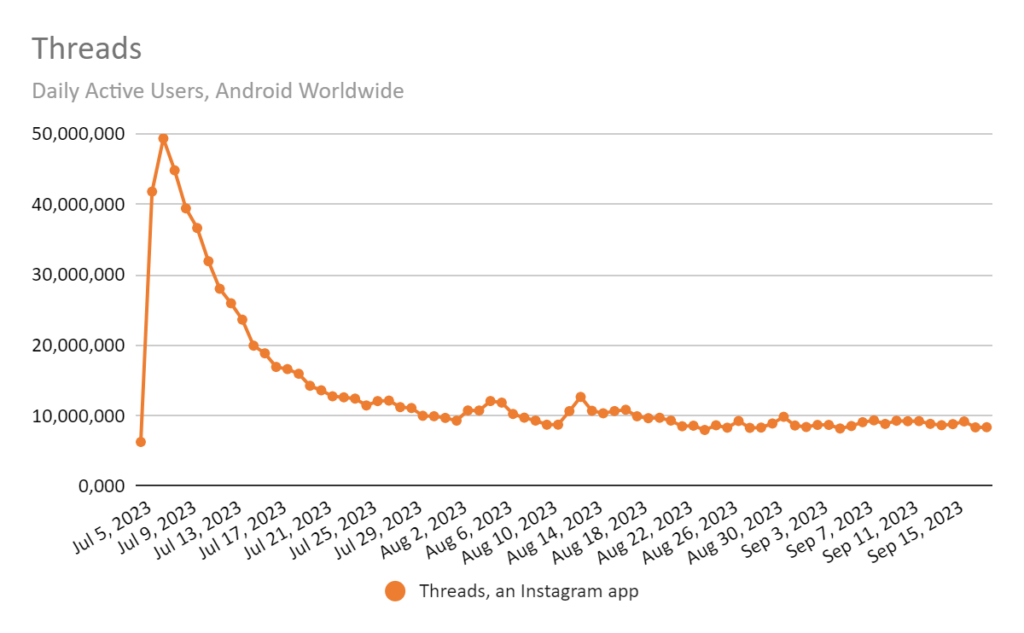Bluesky, a decentralized social network that is still in its early stages of development, has seen a record surge in daily active users after Elon Musk announced that he would begin charging all X users a small monthly fee to use its services.
According to analytics firm Similarweb, Bluesky’s Android app saw half a million daily active users on the day of Musk’s announcement, September 18, and its web traffic surged even higher, with over 775,000 daily visitors. This represents a 20.6% increase in daily active users on Android and a 30% increase in daily visitors on the web from the day prior.

The surge in traffic was so great that Bluesky was forced to temporarily halt new user sign-ups as its website buckled under the influx.
This is not the first time that Bluesky has benefited from Musk’s missteps with X. In the past, Bluesky has seen similar surges in traffic after other X controversies, such as the imposition of temporary rate limits on the number of tweets users could view and the announcement of the end of blocks.

Despite Bluesky’s recent growth, it is still a very small platform compared to X. Bluesky currently has just over 1 million users, while X has over 550 million monthly active users.

However, the fact that Bluesky is able to consistently benefit from X’s blunders suggests that there is a growing appetite for alternatives to X. Bluesky’s decentralized architecture and commitment to free speech make it a particularly attractive option for users who are dissatisfied with X’s direction.
Here are some additional details and insights:
- Bluesky is still invite-only, so the surge in usage this week could have been even higher if it had opened up its doors to anyone interested in joining.
- Bluesky is the largest of the microblogging networks that are directly competing with X, but it is still very small compared to X.
- Despite its small size, Bluesky is growing rapidly and is well-positioned to capitalize on X’s missteps.
- Bluesky’s decentralized architecture and commitment to free speech make it a particularly attractive option for users who are dissatisfied with X’s direction.
Overall, the article provides a good overview of Bluesky’s recent growth and its potential as a competitor to X. The article also highlights the risks that X faces as it continues to alienate its users.








